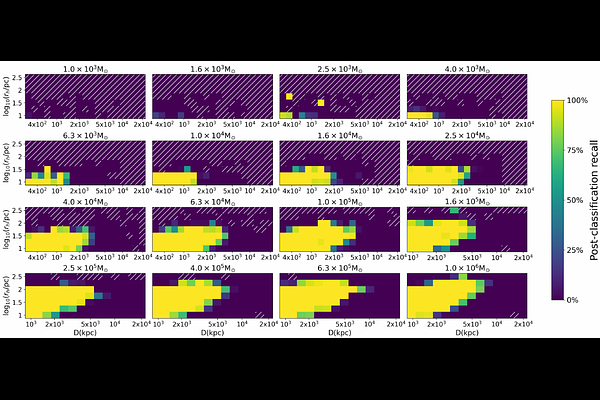ViT-based Local Volume dwarf galaxy Identificationin (VIDA) in the CSST survey

ViT-based Local Volume dwarf galaxy Identificationin (VIDA) in the CSST survey
Han Qu, Zhen Yuan, Chengliang Wei, Chao Liu, Jiang Chang, Guoliang Li, Nicolas F. Martin, Chaowei Tsai, Shi Shao, Yu Luo, Ran Li, Xi Kang, Xiangxiang Xue, Zhou Fan
AbstractIdentifying dwarf galaxies within the Local Volume is crucial for constraining the luminosity function of satellite galaxies in the nearby universe. We report the detection capabilities of dwarf galaxies within the Local Volume using the Chinese Space Station Telescope (CSST). Based on the simulated imaging data of CSST, we develop a detection and classification pipeline that combines traditional image-based search techniques with advanced machine learning classification models. The simulated Local Volume dwarf galaxies can be identified using a pre-processing method for "extended source detection", followed by classification with a pretrained ViT-Base model. This pipeline achieves a true positive rate (TPR) exceeding 85% with a false positive rate (FPR) of only 0.1%. We quantify the detection completeness of Local Volume dwarf galaxies across a three-dimensional parameter space defined by absolute magnitude ($M_V$), half-light radius ($R_h$), and heliocentric distance, based on simulated single-exposure CSST wide-field imaging survey data. For unresolved or semi-resolved dwarf galaxies, our method achieves a significantly deeper absolute magnitude detection limit compared to catalog-based approaches, reaching $M_V = -7$ within 10 \Mpc. By combining this image-based approach with traditional stellar catalog-based "matched filter" techniques, our automated framework established in this work can identify dwarf galaxies within 20 \Mpc for the CSST mission.